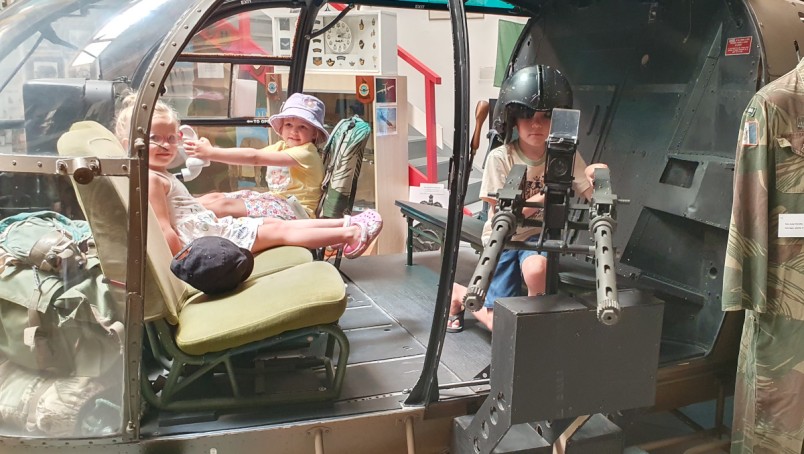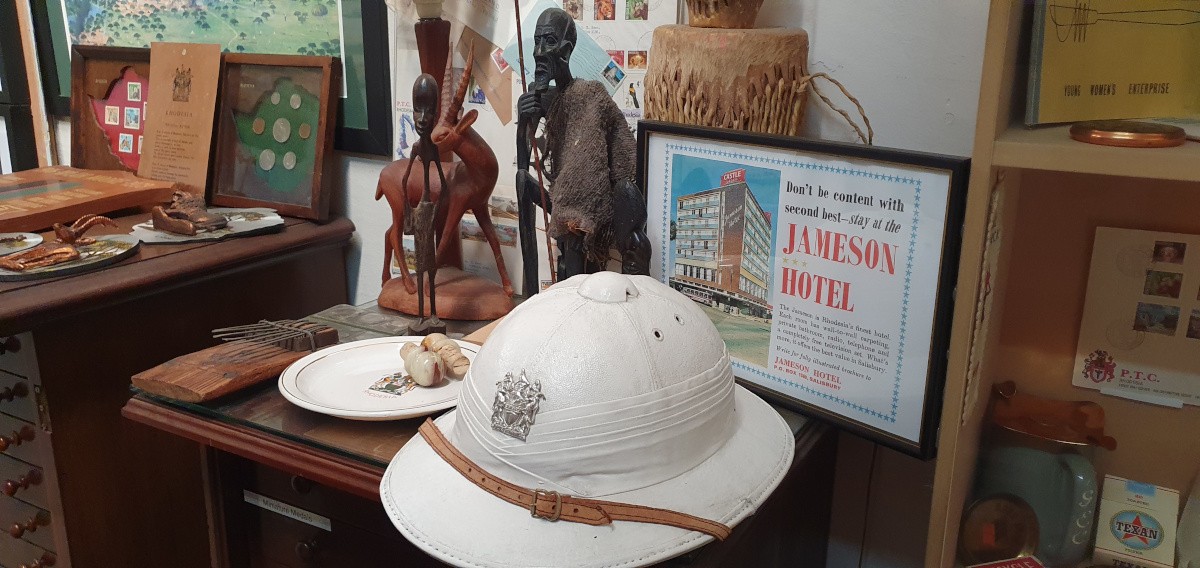I've wanted to go ever since I found out it existed: the Lion and Tusk Museum of the Rhodesian Services Association. It's a small museum tucked away in a unit of the Port of Tauranga in Mount Maunganui and maintained by veterans and descendants of the Rhodesian Bush War.
Their project extends to preserving all of Rhodesian military history from the late 19th century onwards. Rhodesia was a British colony established by Cecil Rhodes' British South Africa Company under a Royal Charter from Queen Victoria.
Their opening hours are between 10am - 3pm from Thursday onwards. We arrived at 2pm during the summer holidays in early January and had only an hour to explore, which was enough time, but you could spend longer there. There's a lot of detail and even an extensive library, plus the staff are very knowledgeable. The entry fees are affordable, given the immense cost of maintaining such a project through donations and the work of volunteers.
I believe it is the only museum of this kind in the world. The reason it ended up in New Zealand is that we became one of the primary places of refuge for the Rhodesian diaspora.
The Background
Rhodesia is a piece of British history most people will be somewhat familiar with. In the post-war era, British policy had changed to only allow independence for colonies if they implemented universal suffrage. Rhodesia—after witnessing their neighbours descend into genocide and anarchy—decided to maintain the vote for land owners only and declared unilateral independence with the Queen as head of state, against her wishes. In the 1960s and 70s a communist uprising, aided by the "international community", resulted in the ethnic cleansing of the Rhodesian people from their homeland. The only countries that offered real assistance were South Africa and Israel. The Rhodesians struggled under embargoes that prevented them from winning the war. The full story is recounted in "The Great Betrayal" by Ian Smith. The targeted murders of white farmers that are common today in South Africa started in Zimbabwe under Mugabe's communist regime.
Many White Rhodedians fled to New Zealand after Mugabe assumed power and Southern Rhodesia became Zimbabwe. Former Prime Minister Ian Smith remained in his country and home until two years before his death in 2007—his farm was confiscated from his descendents by the government in 2012. It's estimated that over 90% of the Rhodesian people either fled or were forcefully removed from their land. However, the decline has been halted in recent years as policies restricting white land ownership in Zimbabwe are rolled back. Of all of the 20th century's genocidal atrocities, this one has been the most erased from the history books. Thankfully interest in Rhodesia has been revived in right-wing circles, both as a warning of what our enemies have in store for our own countries, but also as a tale of bravery and prolonged counter-insurgency with limited means.
It was in many ways an anachronistic country, maintained by the finest gentlemen of an empire that had been hollowed out by World War II.
The Rhodesians fought a physical long defeat while conservatives today fight a cultural long defeat. The true challenge for young right-wingers in this day and age is to break free of the paradigm of the Long Defeat.
The Museum
The centrepiece of this museum is a helicopter: the Alouette III.
I don't mean a miniature version of a knock-off, this is the real deal. The tail section has been removed and hangs from the roof. It's a massive contraption. This type of light helicopter was used to rapidly transport and deploy infantry or special forces at long ranges as part of an aggressive counter-insurgency tactic known as Fireforce.
The kids loved it, and my son especially enjoyed the side mounted machine gun while the girls pretended to pilot. You dangle your legs over the edge as you fire the gun. You can really imagine how that would have been such a cool job back in the day.

They have tapes of war footage too, much of it available on the internet archives and Youtube, but a museum with the artefacts of the war around you is the best way to experience this. The history displays go back to some of the early pioneer skirmishes, the contribution of Rhodesians to the British Empire's defence in World War II, and finally their struggle in the Bush War.
There is poetry written by soldiers about their fallen comrades alongside stories of bravery and heroism. Several displays are interactable, including a Browning machine gun and mortal emplacement on the second floor.
There are plenty of non-military exhibits and displays too as various parts of Rhodesian life have ended up in this museum.
You feel a sense of awe and reverence as you move around the museum, and often moments of sadness as you read the plaques commemorating those who died.
Much care has been taken to simply present the history as it was and in the words of those who experienced it.
Had Rhodesia not been betrayed to communism, it would undoubtedly be the most prosperous country in Africa today. Even at the time of his death in 2007, Ian Smith's reputation was so solid he undoubtedly would have won an overwhelming majority of black votes in Zimbabwe had there still been free elections.
Like many of history's greatest leaders, his reputation has only grown since his death.
Lest we forget.
